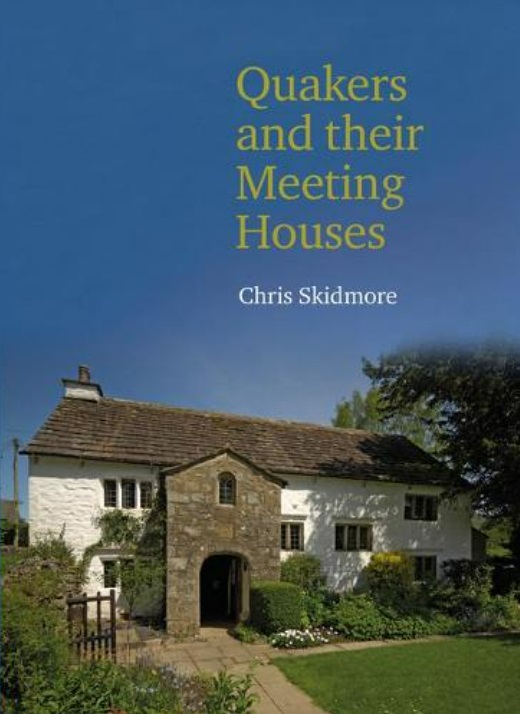Quakers and their Meeting Houses
Quakers and their Meeting Houses, by Chris Skidmore, Historic England/ Liverpool University Press, 2021, 163 pages, 28 black and white and 188 colour illustrations.
We cherish Quaker meeting houses as ‘buildings of endearing simplicity’, for their social history or spiritual significance, or for architecture reflecting contemporary trends. Under threat as Quaker membership declines, we need to understand these buildings to inform conservation and decisions about disposal and change.
In 1999, David Butler’s two-volume gazetteer, Quaker Meeting Houses in Britain, was published, recording over 800 places ‘for which there is evidence of a Quaker meeting’. Between 2014 and 2016, the Quaker Meeting Houses Heritage Project, funded by Historic England and the Quakers, studied 345 meeting houses owned by Quakers and still in use in Britain (excluding Northern Ireland). Chris Skidmore, a member of Skipton Quaker Meeting and editor at the Chapels Society, has written a book that provides valuable synthesis of this study, brought up to date with recent meeting houses; Hammersmith opened in 2020.
With a useful introduction on the history of Quakers, the book provides excellent summaries of the role of George Fox and early Quaker evangelism, state persecution and toleration, Quaker beliefs, how meetings and the Society of Friends were (and are) organised, including the role of women. The book is arranged chronologically, illustrated with examples of meeting houses and ancillary buildings such as stables and (a new one for me) temporary meeting ‘booths’. Quaker meeting houses in America are also referred to, along with outdoor meeting places, burial grounds and Friends House, London. The final chapter is a discussion of Quaker architecture and meeting house fittings, with some personal observations from the author. Is there a defined Quaker style? 17th- and 18th-century meeting houses were fairly consistent in their planning and aesthetics (with regional variations), but once architects were involved, architectural diversity increased and diluted earlier distinctiveness.
The book is not a gazetteer of meeting houses, so David Butler’s books, which include a plan of every building, are still essential. For more detailed information on meeting houses, the 2014–2017 reports compiled by AHP with input from Quaker volunteers are available online at http://heritage.quaker.org.uk. Skidmore’s book includes a gazetteer of listed meeting houses, but this is not comprehensive; it includes all Grade I and II* buildings, but only Grade II listed buildings referred to in the text, along with some former meeting houses, such as Cartmel Height, now a dwelling. In 2019 11 meeting houses were newly listed at Grade II and six were upgraded to Grade II* or Grade I.
Generously illustrated, well produced and written in an accessible style, the book is a pleasure to read. There is a useful glossary of architectural and Quaker terms. A few more plans, particularly to illustrate early meeting houses such as Brigflatts, would have been useful, but plans can be found elsewhere.
This article originally appeared as ‘Endearing simplicity’ in the Institute of Historic Building Conservation’s (IHBC’s) Context 173, published in September 2022. It was written by Marion Barter, a buildings historian, who led the Quaker Meeting Houses Heritage Project while at AHP.
--Institute of Historic Building Conservation
Related articles on Designing Buildings
- Conservation in the heritage cities of Venice and Liverpool.
- DCMS Culture Secretary comments on HM Government position on contested heritage.
- Diversity.
- Equity, diversity and inclusion in the heritage sector.
- Ethics.
- Heritage asset.
- Heritage.
- How architecture can suppress cultural identity.
- IHBC articles.
- Institute of Historic Building Conservation.
- Queer Spaces: an atlas of LGBTQIAplus places and stories.








Comments
[edit] To make a comment about this article, click 'Add a comment' above. Separate your comments from any existing comments by inserting a horizontal line.